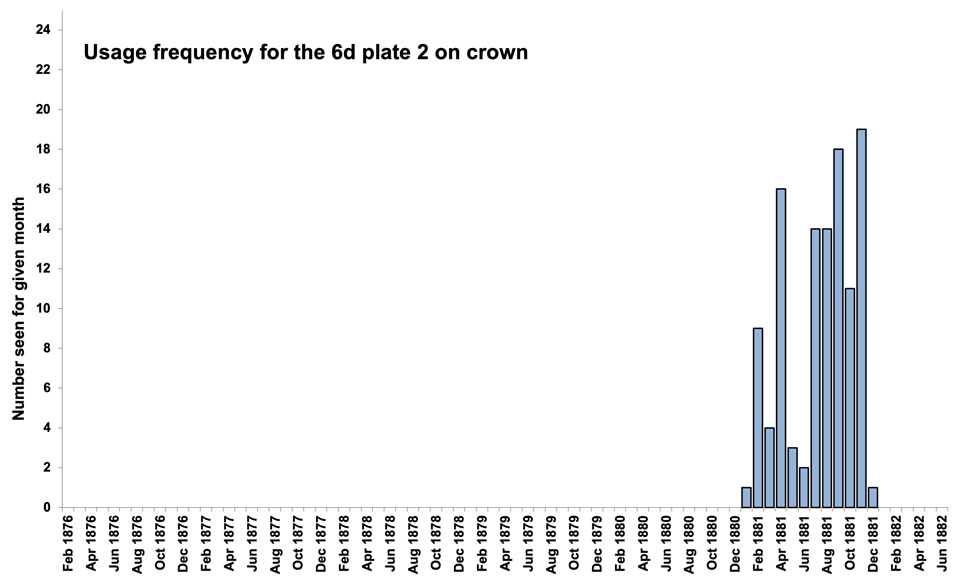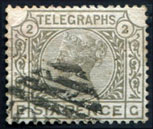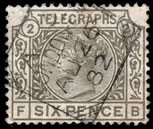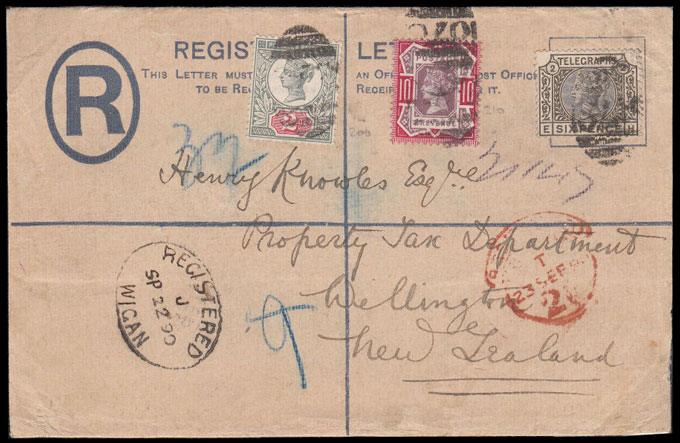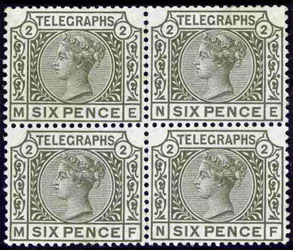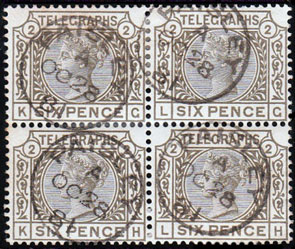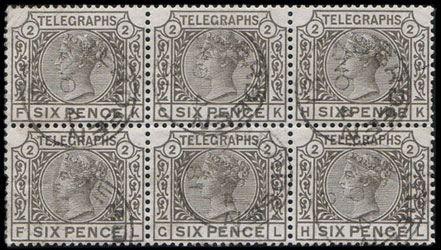1 Essays
2 Die Proofs
3 Sheet Layout
4 Plate Proofs
5 Paper
6 Imprimaturs
7 Colour Standards
8 Specimens
9 Issued Stamps
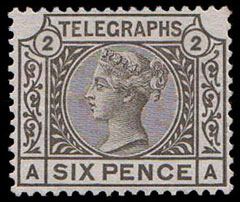
Date: Jan 1881
Plates: 2
Printer: De La Rue
Watermark: Crown (sideways-inverted)
Perforation: 14
In 1880 the Post Office decided to use one kind of paper for most standard sized postage and telegraph stamps. Imperial Crown paper was used upright for postage stamps starting with the 1880 “Provisional” issue, and hence sideways for telegraph stamps. The 3d, 6d, 1s, and 3s plates were altered to fit the new layout, and re-registered sheets were endorsed “Proof after alteration of Plate”. Since these were altered plates, there are no essays or die proofs. New telegraph stamps were issued in 1881.
Sheet Layout
The sheet had 240 stamps in two panes, arranged horizontally. Each pane had 120 stamps in 12 rows of 10. The margins had division ornaments, two hexagons between the panes and two half hexagons in the side margins, marking the division into Post Office sheets of 40 stamps. There were no plate or current numbers. At the middle of each side was a small “T” used as a perforating guide.
A Post Office sheet was 40 stamps, valued at one pound.
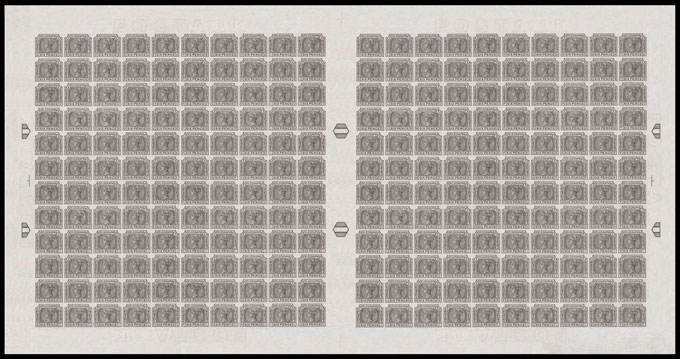
Computer generated image, click to enlarge.
Plate Proofs
There are no plate proofs for the altered plates.
Paper
From 1881, plate 2 was printed on Crown paper.
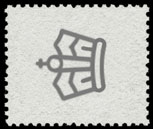
The watermark as seen from the front of the stamp.
For more details on Crown paper click here.
Imprimaturs
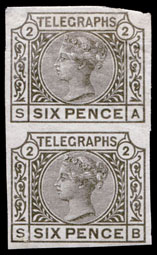
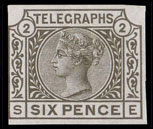
Plate 2 was re-registered on 29 June 1881. Vertical pair SA-SB has been incorrectly described as “imperforate — not from the imprimatur sheet”.
The sheet was endorsed “Proof after alteration of Plate.” and
“Ordered that this altered Plate be brought into use.”
The registration sheets for the Telegraphs have been lost. However, we can reconstruct them from known examples and a clear pattern emerges. Most have a column of 12 taken, plus four from the adjacent column, and a plate number example from the opposite corner. One sheet of each value has an extra column of 12 taken.
Red represents an institutionalised example.
Green a known example in private hands.
Blue is unknown but predicted by the pattern.
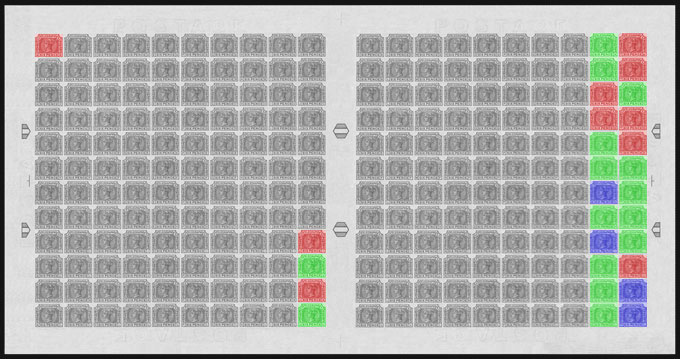
| Institutionalised/Total: | 10/29 |
| Royal Philatelic Collection: | AA, TB |
| British Postal Museum: | JI, JK |
| Tapling Collection: | TJ |
| Langmead Collection: | SC-SD, TA |
| Phillips Collection: | TD, TE |
Two pairs remain intact: SA-SB and SC-SD. NB is listed in Langmead and Huggins, but this is a plate proof illustrated in Wright and Creeke.
Colour Standards
There are no 6d colour standards on Crown paper.
Specimens
There are no 6d specimens on Crown paper.
Issued Stamps
Stamps were issued from plate 2 only.
The usage frequency graph shows that plate 2 was used from Jan 1881.
Click the graph to enlarge.
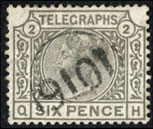
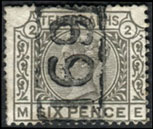
Issued Stamps — Plate 2
Plate 2 (current no. 534) was registered on 29 June 1881.
Scarcity #15 in mint telegraphs, #27 in used telegraphs.
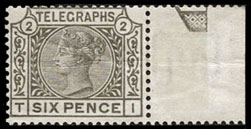
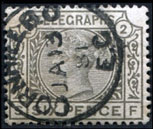
Mint multiples are rare with only one block of four known to us.
Used multiples are scarce with two pairs, a block of four, and a block of six known to us. The earliest known used example is 13 Jan 1881 at Cornhill B.O., E.C. (illustrated).
No upright (sideways) watermarks are known to us. All are sideways-inverted.
Click the images to enlarge.
